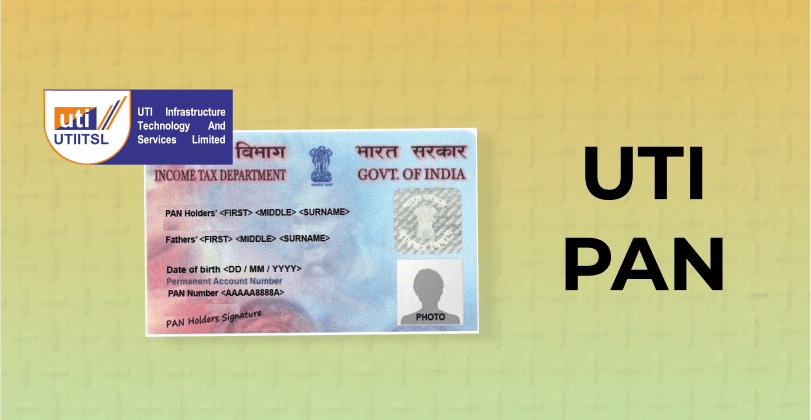Elections in India, the world's largest democracy, are a grand exercise of the people's will, reflecting the diverse voices of over 96.88 crore registered
In a vibrant democracy like India, an informed electorate is the cornerstone of fair and free elections. Recognising this, the Election Commission of India (ECI) has introduced several initiatives to educate and empower voters, with the SVEEP programme being a standout effort.
The full form of SVEEP is Systematic Voter Education and Electoral Participation. Launched in 2009, SVEEP aims to enhance voter awareness, increase electoral participation, and ensure a more inclusive and participatory democracy.
The primary purpose of SVEEP is to bridge the gap in voter education and promote informed electoral choices among citizens. Through a variety of initiatives, SVEEP seeks to increase voter turnout, especially among first-time voters, women, and marginalised communities, and ensure that all voters are well-informed about the electoral process.
What does SVEEP hope to Achieve?
The SVEEP programme has several key objectives aimed at fostering a more informed and active electorate in India. By understanding the meaning of SVEEP, we can see how this initiative is pivotal in strengthening democratic processes.
Objectives of SVEEP:
-
Enhance Voter Education and Promote Ethical Voting:
SVEEP aims to educate citizens about the electoral process, their voting rights and responsibilities, and the importance of voting. The programme focuses on promoting ethical voting practices, ensuring that voters make informed choices and cast their votes responsibly, free from external pressures or inducements. Educational outreach activities and awareness campaigns are central to this objective. -
Increase Voter Registration and Turnout:
SVEEP works to boost voter registration and participation, particularly among first-time voters, women, and marginalized communities. By simplifying the registration process, organising registration drives, and providing accessible information through digital platforms and voter facilitation centres, SVEEP ensures that more eligible citizens register and participate in elections. -
Facilitate Informed Voting:
The programme provides comprehensive information about candidates, political parties, and their manifestos, helping voters make well-informed decisions at the polling booth. SVEEP’s initiatives include detailed informational campaigns and accessible resources to support voters in understanding their choices. -
Ensure Efficient and Transparent Elections:
SVEEP aims to streamline the election process, ensuring smooth, transparent, and efficient polling. This involves training election officials, leveraging technology, and implementing measures to enhance the overall integrity and efficiency of elections.
Management Structure of SVEEP
The SVEEP programme operates through a comprehensive and multi-dimensional management structure that ensures its objectives are effectively implemented at every level of the electoral process. This structure spans from the grassroots to the national level, facilitating widespread voter education and participation.
-
Booth Level: At the booth level, SVEEP initiatives are carried out by Booth Level Officers (BLOs), who play a crucial role in voter education and facilitation. BLOs are responsible for:
- Assisting voters with registration and corrections to the electoral roll.
- Distributing voter slips and providing information about polling stations.
- Conducting door-to-door campaigns to educate voters about the importance of participating in elections.
- Addressing specific issues faced by voters, such as accessibility concerns for differently-abled individuals.
-
District Level: At the district level, District Election Officers (DEOs) oversee the implementation of SVEEP activities. They coordinate with various stakeholders, including local government bodies, educational institutions, and community organisations, to promote voter education. Key responsibilities include:
- Organising voter awareness campaigns and registration drives.
- Conducting training programmes for election officials and volunteers.
- Ensuring the availability of voter facilitation centres and resources.
- Monitoring the effectiveness of SVEEP initiatives and making necessary adjustments.
-
State Level: At the state level, the Chief Electoral Officer (CEO) leads the SVEEP programme. The CEO is responsible for:
- Developing and executing state-specific voter education strategies.
- Collaborating with state government departments, media houses, and civil society organisations.
- Implementing special initiatives targeting under-represented groups, such as women, rural voters, and marginalised communities.
- Reviewing district-level activities and providing guidance and support to DEOs.
-
National Level: At the national level, the Election Commission of India (ECI) formulates the overall strategy and policy framework for SVEEP. The ECI ensures that the programme aligns with its broader goals of enhancing voter awareness and participation. Responsibilities at this level include:
- Designing nationwide campaigns and media outreach programmes.
- Setting guidelines and best practices for voter education and facilitation.
- Coordinating with national and international organisations to adopt innovative approaches and technologies.
- Monitoring and evaluating the impact of SVEEP initiatives across the country.
How does SVEEP Function?
The SVEEP programme operates through a well-structured approach, encompassing both pre-poll and poll phases. This ensures a comprehensive voter education and participation strategy, addressing every aspect of the electoral process.
Pre-Poll Phase
-
Voter Education and Registration:
-
Planning:
- Detailed planning involves identifying target groups, understanding their specific needs, and devising strategies to reach them effectively.
- Setting clear objectives for voter turnout, awareness levels, and registration rates.
-
Preparation:
- Developing educational materials, such as brochures, pamphlets, and digital content, tailored to different demographics.
- Training election officials, volunteers, and community leaders to carry out voter education activities.
-
-
Partnerships and Collaborations:
- Collaborating with local organisations, educational institutions, and media houses to expand the reach of voter education campaigns.
- Forming alliances with NGOs and civil society organisations to engage with marginalised and under-represented communities.
-
Implementation:
- Launching mass media campaigns through television, radio, newspapers, and social media to raise awareness about the importance of voting.
- Organising voter registration drives and setting up voter facilitation centres to assist citizens with the registration process.
- Conducting workshops, seminars, and community meetings to educate voters about their rights and the voting process.
Poll Phase
-
Ensuring Ethical and Efficient Polls
-
Planning:
- Developing a detailed election day plan, including logistics, security, and contingency measures.
- Coordinating with local authorities and law enforcement to ensure smooth and secure voting operations.
- Developing a detailed election day plan, including logistics, security, and contingency measures.
-
Preparation:
- Training polling staff and volunteers on election day procedures, including the use of Electronic Voting Machines (EVMs) and Voter Verifiable Paper Audit Trails (VVPATs).
- Setting up polling stations with necessary facilities to accommodate all voters, including differently-abled individuals.
- Training polling staff and volunteers on election day procedures, including the use of Electronic Voting Machines (EVMs) and Voter Verifiable Paper Audit Trails (VVPATs).
-
Partnerships and Collaborations:
- Working with community organisations and volunteers to ensure voter assistance and support on election day.
- Engaging with the media to provide real-time updates and information to the public.
- Working with community organisations and volunteers to ensure voter assistance and support on election day.
-
Implementation:
- Ensuring all polling stations are operational and accessible to voters from the start to the end of polling hours.
- Monitoring polling activities to detect and address any issues or irregularities promptly.
- Facilitating transparent and efficient counting of votes and declaration of results.
- Ensuring all polling stations are operational and accessible to voters from the start to the end of polling hours.
-
Join the Movement: Make Your Vote Count!
The SVEEP programme plays a crucial role in educating and empowering voters, ensuring that every citizen can participate actively in the democratic process. By understanding the SVEEP's meaning and its multifaceted approach, we see its importance in fostering a well-informed and engaged electorate.
SVEEP aims to create a more inclusive and participatory democracy through educational campaigns, community engagement, or efficient poll management.
Before You Go…
Get quick and hassle-free personal loans on KreditBee. Whether you need money for an emergency, travel, or any other personal need, KreditBee offers instant loans with hassle-free documentation and fast approval. Apply now and get funds directly in your bank account within minutes!
FAQs
The full form of SVEEP is Systematic Voter Education and Electoral Participation. The Election Commission of India launched it to enhance voter awareness and participation.
The main objective of the SVEEP programme is to educate and empower voters to participate actively in the electoral process. It aims to increase voter turnout, particularly among first-time voters, women, and marginalised communities, and to ensure that elections are conducted ethically and efficiently.
SVEEP encourages voter registration through mass media campaigns, community engagement activities, and voter registration drives. It also sets up Voter Facilitation Centers to assist citizens with the registration process and leverages digital platforms to provide accessible information.
AUTHOR
KreditBee As a market leader in the Fintech industry, we strive to bring you the best information to help you manage finances better. These blogs aim to make complicated monetary matters a whole lot simpler.







